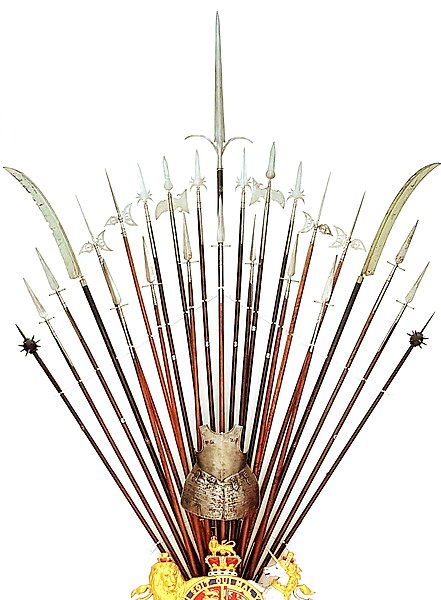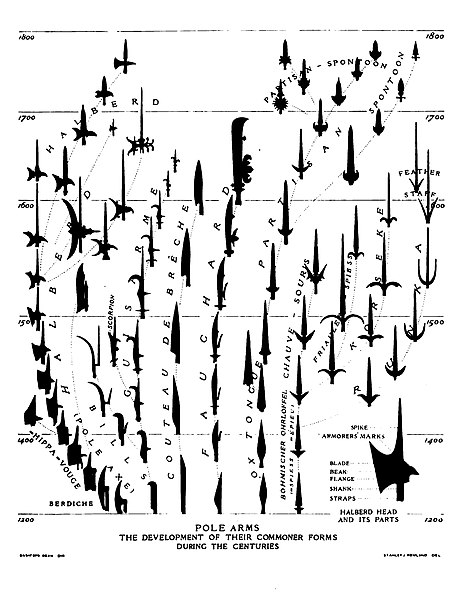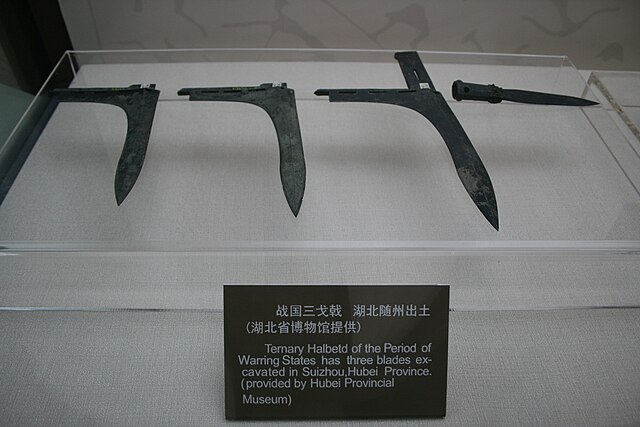A bardiche, berdiche, bardische, bardeche, or berdish is a type of polearm used from the 14th to 17th centuries in Europe. Ultimately a descendant of the medieval sparth axe or Dane axe, the bardiche proper appears around 1400, but there are numerous medieval manuscripts that depict very similar weapons beginning c. 1250. The bardiche differs from the halberd in having neither a hook at the back nor a spear point at the top. The use of bardiches started in early 14th-century Austria.
Two examples of a bardiche together with a flail, on display in Suzdal
Several medieval battle axes including a 15th-century Austrian bardiche
Illustration from the Psalter–Hours of Ghuiluys de Boisleux, 1246–1250 (Morgan Collection, MS M.730). The man on far right carries what appears to be an early bardiche.
17th-century streltsy with musket and bardiche
A polearm or pole weapon is a close combat weapon in which the main fighting part of the weapon is fitted to the end of a long shaft, typically of wood, extending the user's effective range and striking power. Polearms are predominantly melee weapons, with a subclass of spear-like designs fit for thrusting and/or throwing. Because many polearms were adapted from agricultural implements or other fairly abundant tools, and contained relatively little metal, they were cheap to make and readily available. When belligerents in warfare had a poorer class who could not pay for dedicated military weapons, they would often appropriate tools as cheap weapons. The cost of training was comparatively low, since these conscripted farmers had spent most of their lives using these "weapons" in the fields. This made polearms the favoured weapon of peasant levies and peasant rebellions the world over.

A variety of polearms consisting of morning stars, halberds, partisans, spontoons, war scythes, and a ranseur in the center
Evolution of various European polearms from the 13th to 18th centuries
Shang dynasty polearm
Triple dagger-axe ji, Warring States period








